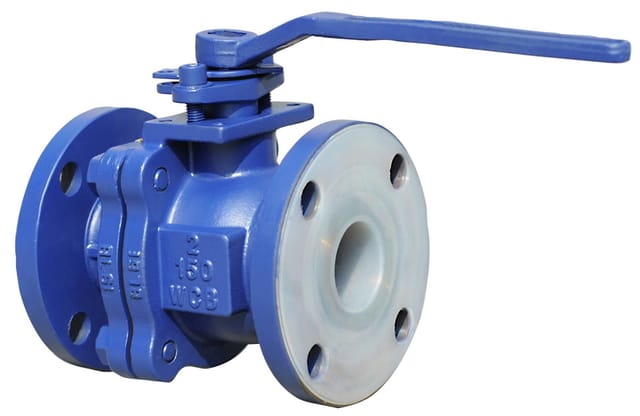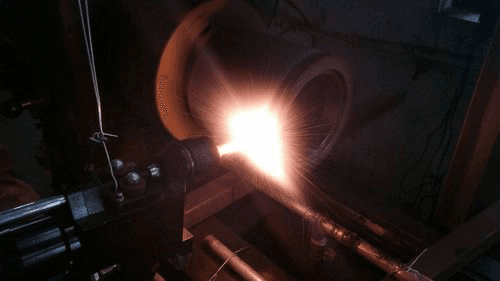Corrosion Protection Measures for Metal Valves: A Comprehensive Guide
6 min read
Overview
Metal valves mainly break down due to corrosion, especially when metals react with chemicals around them. Think of it like rust forming on an old bike left in the rain. To protect valves, we first try to stop this chemical reaction. When we can't stop it completely, we use other ways to shield the metal.
Eliminating Electrochemical Corrosion
Material Selection
The selection of the correct material is crucial in preventing corrosion. Different materials have varying levels of corrosion resistance, and the selection of the correct material depends on the specific application and the properties of the medium.For instance:
- When picking valve materials, we need to think about:
- What liquid or gas flows through the valve
- How hot or cold it gets
- How strong the chemicals are
- Here's what happens with different materials:
- Lead holds up well in weak acid but breaks down quickly in strong acid
- Steel gets damaged most when acid is half-strength
- Stainless steel works great with weak acid but not with very strong acid
- Temperature matters a lot - for every 10°C hotter it gets, corrosion happens 1-3 times faster
Process Improvement
The design and manufacturing process of the valve should be considered to prevent corrosion. If the valve's structure is designed reasonably, and the manufacturing process is correct, the corrosion of the valve can be significantly reduced. For instance, the use of welding and grinding processes can create micro-cracks on the valve's surface, providing a pathway for corrosive substances to penetrate and cause damage.
Cathodic Protection
Cathodic protection is a method of protecting metal valves by making the valve the cathode and introducing an external direct current to make the valve's potential move in a negative direction. When the potential reaches a certain value, the corrosion current is significantly reduced, and the valve is protected. This method is widely used in the oil and gas industry to protect pipelines and valves from corrosion.

Adding Corrosion Inhibitors
Corrosion inhibitors can be added to the medium or filler to prevent corrosion. The corrosion inhibitor can promote the polarization of the battery and reduce the corrosion rate. For example, the addition of corrosion inhibitors such as sodium nitrite and sodium chromate can significantly reduce the corrosion rate of carbon steel in acidic environments.
Surface Coating
The surface of the valve can be treated with methods such as plating, electroplating, or oxidation to create a protective film. This film can improve the valve's corrosion resistance and mechanical properties. For example, valve connection bolts are commonly coated with zinc, chrome, and oxidation to enhance their resistance to atmospheric or medium corrosion. Other fasteners, in addition to the above treatments, can also be treated with phosphating or bluing according to the situation. Sealing surfaces and small-diameter closing parts are often treated with nitriding or boronizing to improve their corrosion resistance and wear resistance.

Anodic Protection
Anodic protection is a method of protecting metal valves by making the valve the anode and introducing an external direct current to make the valve's potential move in a positive direction. When the potential reaches a certain value, the valve's corrosion rate is significantly reduced. This method is widely used in the chemical industry to protect equipment and piping from corrosion.
Using Non-Metal Parts
Non-metallic materials have excellent corrosion resistance and can replace metal materials in certain applications. Non-metallic materials can solve corrosion problems and reduce costs. For example, the use of non-metallic valves such as polyvinyl chloride (PVC) and polyethylene (PE) can provide effective corrosion protection in acidic environments.

Spray Coating
Spray coating is a widely used method of protecting metal valves from corrosion. The coating can be applied to the valve's surface to prevent corrosion. For instance, the application of a polyurethane coating on metal valves can provide effective corrosion protection in marine environments.

Special Protection Methods
Thermal Spraying
Thermal spraying is a surface treatment method that can improve the valve's corrosion resistance and mechanical properties. This method involves the spraying of molten metal particles onto the valve's surface to create a protective film.
Environmental Control
The environment can significantly affect the corrosion of metal valves. Regular cleaning and maintenance of the valve can help prevent corrosion. To protect valves, we should:
- Clean them regularly
- Add oil when needed
- Keep them covered
- Make sure air can flow around them
- Keep the area cool and dry
Good valve care includes:
- Looking for damage often
- Cleaning off dirt and dust
- Fixing problems early
- Following the maker's instructions
- Keeping records of maintenance
Case Studies
Corrosion Protection of a Carbon Steel Valve
A carbon steel valve was used in a corrosive environment, and the valve's surface was coated with a layer of polyurethane to provide corrosion protection. The valve was installed in a tank that contained a mixture of sulfuric acid and water, and the valve was exposed to the corrosive environment for several months. After the installation, the valve was inspected, and the coating was found to be intact. The valve's surface was free from corrosion, and the valve's performance was satisfactory.
Conclusion
Taking care of valves isn't hard if you:
- Choose the right materials
- Keep them clean
- Fix problems quickly
- Follow the maintenance plan
- Use the right protection methods
Remember, good valve care saves money and keeps your system running smoothly.
FAQs
- What is the primary cause of corrosion in metal valves?
- The primary cause of corrosion in metal valves is electrochemical corrosion.
- How to select the correct valve material to prevent corrosion?
- The correct valve material should be selected according to the specific application and the properties of the medium.
- What is cathodic protection?
- Cathodic protection is a method of protecting metal valves by making the valve the cathode and introducing an external direct current to make the valve's potential move in a negative direction.
- How to use corrosion inhibitors?
- Corrosion inhibitors can be added to the medium or filler to promote the polarization of the battery and reduce the corrosion rate.
- Why is regular cleaning and maintenance of the valve necessary?
- Regular cleaning and maintenance of the valve can help prevent corrosion caused by the environment.
- How often should I check my valves?
- Check them every three months, or more often in harsh conditions.
- What's the best way to protect outdoor valves?
- Use covers, good paint, and regular cleaning.
- Can I use plastic valves everywhere?
- No, plastic valves work best in cool places with mild chemicals.
- How do I know if a valve needs repair?
- Look for rust, leaks, hard operation, or unusual noises.
- What's the easiest way to prevent corrosion?
- Keep valves clean, dry, and well-maintained.
